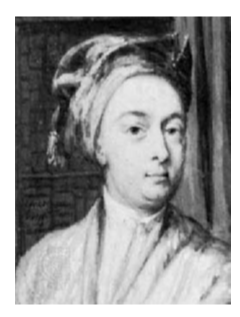3.1: Taylor’s Formula
( \newcommand{\kernel}{\mathrm{null}\,}\)
- Explain the Taylor formula
As we saw in the previous chapter, representing functions as power series was a fruitful strategy for mathematicans in the eighteenth century (as it still is). Differentiating and integrating power series term by term was relatively easy, seemed to work, and led to many applications. Furthermore, power series representations for all of the elementary functions could be obtained if one was clever enough.
However, cleverness is an unreliable tool. Is there some systematic way to find a power series for a given function? To be sure, there were nagging questions: If we can find a power series, how do we know that the series we’ve created represents the function we started with? Even worse, is it possible for a function to have more than one power series representation centered at a given value
If
then
where
A few comments about Theorem
actually has meaning (that it converges). At this point we have every reason to expect that it does, however expectation is not proof so we note that this is an assumption, not an established truth. Similarly, the idea that we can differentiate an infinite polynomial term-by-term as we would a finite polynomial is also assumed. As before, we follow in the footsteps of our
Prove Theorem
- Hint
-
From Theorem
is called the Taylor series for

Figure
The special case when
Thus when
and this series is often called the Maclaurin Series for
The “prime notation” for the derivative was not used by Taylor, Maclaurin or their contemporaries. It was introduced by Joseph Louis Lagrange in his 1779 work Théorie des Fonctions Analytiques. In that work, Lagrange sought to get rid of Leibniz’s infinitesimals and base calculus on the power series idea. His idea was that by representing every function as a power series, calculus could be done “algebraically” by manipulating power series and examining various aspects of the series representation instead of appealing to the “controversial” notion of infinitesimals. He implicitly assumed that every continuous function could be replaced with its power series representation.

Figure
That is, he wanted to think of the Taylor series as a “great big polynomial,” because polynomials are easy to work with. It was a very simple, yet exceedingly clever and far-reaching idea. Since
This idea did not come out of nowhere. Leonhard Euler had put exactly that idea to work to solve many problems throughout the
Taking his cue from the Taylor series
If we regard the parameter
Lagrange dubbed his function
All in all, this was a very clever and insightful idea whose only real flaw is that its fundamental assumption is not true. It turns out that not every differentiable function can be represented as a Taylor series. This was demonstrated very dramatically by Augustin Cauchy’s famous counter-example
This function is actually infinitely differentiable everywhere but its Maclaurin series (that is, a Taylor series with
Not every differentiable function can be represented as a Taylor series.
Computing these derivatives using the definition you learned in calculus is not conceptually difficult but the formulas involved do become complicated rather quickly. Some care must be taken to avoid error.
To begin with, let’s compute a few derivatives when
As you can see the calculations are already getting a little complicated and we’ve only taken the second derivative. To streamline things a bit we take
- Adopting the notation
- Use induction on n to show that
Unfortunately everything we’ve done so far only gives us the derivatives we need when
Let’s assume for the moment that we know that
We can close the deal with the following problem.
- Let m be a nonnegative integer. Show that
- Prove that
- Let
This example showed that while it was fruitful to exploit Taylor series representations of various functions, basing the foundations of calculus on power series was not a sound idea.
While Lagrange’s approach wasn’t totally successful, it was a major step away from infinitesimals and toward the modern approach. We still use aspects of it today. For instance we still use his prime notation (
Turning Lagrange’s idea on its head it is clear that if we know how to compute derivatives, we can use this machine to obtain a power series when we are not “clever enough” to obtain the series in other (typically shorter) ways. For example, consider Newton’s binomial series when
Taylor’s formula provides a more systematic way to obtain this series:
and in general since
we have
Using Taylor’s formula we obtain the series
which agrees with equation 2.2.40 in the previous chapter.
Use Taylor’s formula to obtain the general binomial series
Use Taylor’s formula to obtain the Taylor series for the functions
As you can see, Taylor’s “machine” will produce the power series for a function (if it has one), but is tedious to perform. We will find, generally, that this tediousness can be an obstacle to understanding. In many cases it will be better to be clever if we can. This is usually shorter. However, it is comforting to have Taylor’s formula available as a last resort.
The existence of a Taylor series is addressed (to some degree) by the following.
If
Before we address the proof, notice that the
resembles the Taylor series and, in fact, is called the
Notice that the case when
to provide the anchor step for our induction.
To derive the case where
we obtain
Provide a formal induction proof for Theorem


